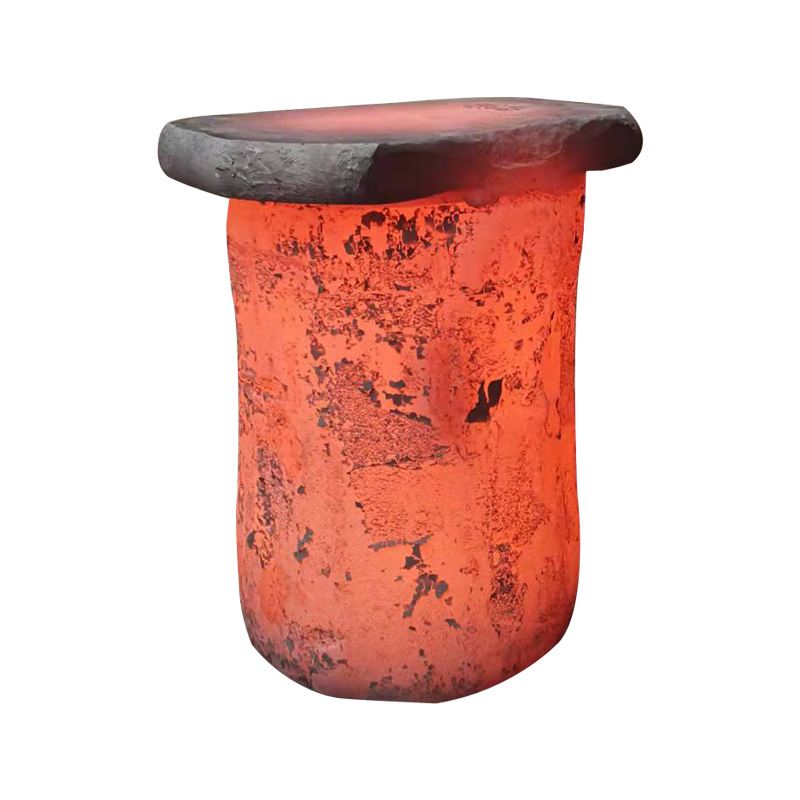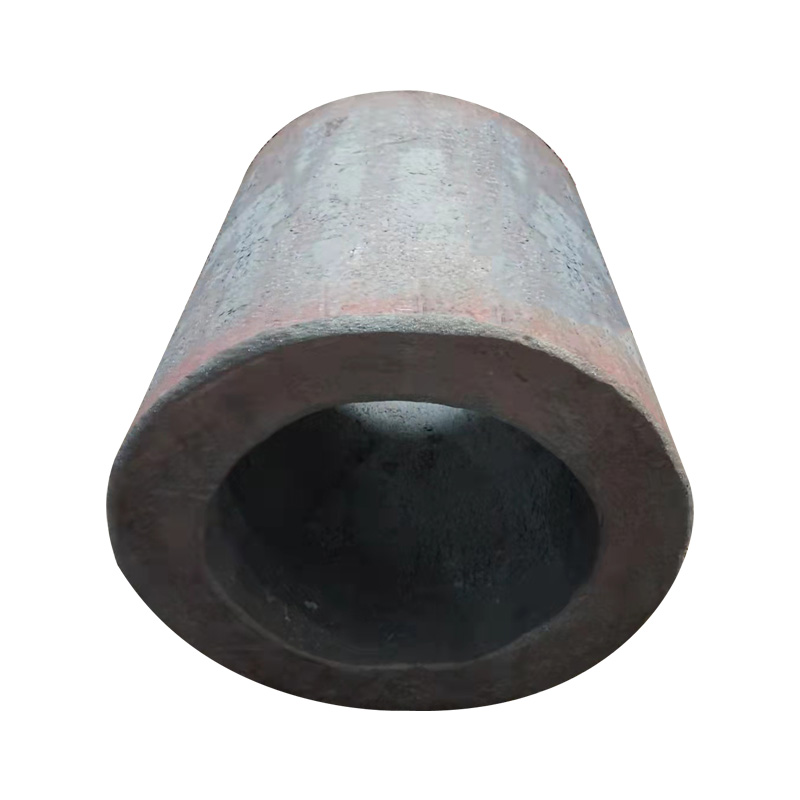Several heat treatment methods for gear forgings
2022-07-07
Gear forgings in forging plant production, all need to be heat treatment, by means of heating, heat preservation and cooling, in order to obtain the expected structure and performance requirements, usually gear forgings heat treatment methods have the following.
1, gear forgings surface hardening: often used for medium carbon steel and carbon alloy steel, such as 45, 40Cr steel. After surface quenching, the hardness of tooth surface is generally 40 ~ 55HRC. It is characterized by resistance to fatigue pitting, high resistance to glue and good wear resistance. Due to the end of the tooth center hardened, the gear forgings still have enough toughness to withstand moderate impact loads.
2, gear forgings carburizing quenching: often used in low carbon steel and low carbon alloy steel, such as 20, 20Cr steel. After carburizing and quenching, the hardness of tooth surface can reach 56 ~ 62HRC, and the tooth center still maintains a high toughness, the bending strength of gear forgings and tooth surface contact strength is high, wear resistance is good, often used for the impact load of important gear transmission. Gear forgings after carburizing and quenching, gear teeth deformation is large, should be grinding.
3, gear forging nitriding: nitriding is a kind of surface chemical heat treatment. After nitriding, there is no need for other heat treatment, and the hardness of tooth surface can reach 700 ~ 900HV. Due to the high hardness, low process temperature and small deformation of the gear after nitriding treatment, it is suitable for internal gears and gears that are difficult to grind. It is often used in nitriding steel containing chromium, copper, lead and other alloying elements, such as 38CrMoAlA.
4. Quenching and tempering of gear forgings: quenching and tempering are generally used in medium carbon steel and medium carbon alloy steel, such as 45, 40Cr, 35SiMn steel, etc. After quenching and tempering, the hardness of tooth surface is generally 220 ~ 280HBS. Because the hardness is not high, the precision machining of gear forging can be carried out after heat treatment.
5, gear forgings normalizing: normalizing can eliminate internal stress, refine grain, improve mechanical properties and cutting performance. Medium carbon steel can be used to normalize gear forgings with low mechanical strength requirements, and cast steel can be used to normalize gear forgings with large diameter.
1, gear forgings surface hardening: often used for medium carbon steel and carbon alloy steel, such as 45, 40Cr steel. After surface quenching, the hardness of tooth surface is generally 40 ~ 55HRC. It is characterized by resistance to fatigue pitting, high resistance to glue and good wear resistance. Due to the end of the tooth center hardened, the gear forgings still have enough toughness to withstand moderate impact loads.
2, gear forgings carburizing quenching: often used in low carbon steel and low carbon alloy steel, such as 20, 20Cr steel. After carburizing and quenching, the hardness of tooth surface can reach 56 ~ 62HRC, and the tooth center still maintains a high toughness, the bending strength of gear forgings and tooth surface contact strength is high, wear resistance is good, often used for the impact load of important gear transmission. Gear forgings after carburizing and quenching, gear teeth deformation is large, should be grinding.
3, gear forging nitriding: nitriding is a kind of surface chemical heat treatment. After nitriding, there is no need for other heat treatment, and the hardness of tooth surface can reach 700 ~ 900HV. Due to the high hardness, low process temperature and small deformation of the gear after nitriding treatment, it is suitable for internal gears and gears that are difficult to grind. It is often used in nitriding steel containing chromium, copper, lead and other alloying elements, such as 38CrMoAlA.
4. Quenching and tempering of gear forgings: quenching and tempering are generally used in medium carbon steel and medium carbon alloy steel, such as 45, 40Cr, 35SiMn steel, etc. After quenching and tempering, the hardness of tooth surface is generally 220 ~ 280HBS. Because the hardness is not high, the precision machining of gear forging can be carried out after heat treatment.
5, gear forgings normalizing: normalizing can eliminate internal stress, refine grain, improve mechanical properties and cutting performance. Medium carbon steel can be used to normalize gear forgings with low mechanical strength requirements, and cast steel can be used to normalize gear forgings with large diameter.
General requirements of gear forgings can be used for transmission of soft tooth surface gear. In order to reduce the possibility of gluing and to make the life of the pinion and the pinion equal, the hardness of the pinion tooth surface is usually 30-50hBs higher than that of the big one. For the transmission of high speed, heavy duty or important gear forgings, hard tooth surface gear combination can be used, the hardness of tooth surface can be roughly the same.
These are big forgings produced by Tongxin precision forging company


X
We use cookies to offer you a better browsing experience, analyze site traffic and personalize content. By using this site, you agree to our use of cookies.
Privacy Policy



